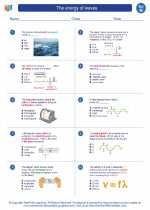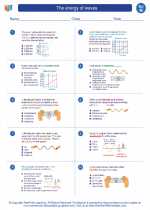Static Electricity
Static electricity is the buildup of electric charge on the surface of an object. It is called "static" because the charges do not move. This phenomenon occurs when certain materials are rubbed against each other, causing electrons to be transferred from one material to the other. This transfer of electrons creates an imbalance of charges, resulting in static electricity.
Key Concepts
- Electrons: Negatively charged particles that orbit the nucleus of an atom.
- Electric Charge: The property of matter that causes it to experience a force when placed in an electromagnetic field.
- Conductors and Insulators: Materials that allow or prevent the flow of electric charge, respectively.
- Electrostatic Force: The force of attraction or repulsion between charged objects.
- Triboelectric Series: A list of materials ranked according to their tendency to gain or lose electrons when rubbed against other materials.
Experiments
Here are some simple experiments you can do to explore static electricity:
- Rub a balloon against your hair and observe how the balloon becomes charged and can attract small objects.
- Use a plastic comb to charge small pieces of paper by rubbing it against wool or silk fabric.
- Observe the effect of static electricity on a stream of water by combing your hair and bringing the charged comb close to the water.
Real-World Applications
Static electricity has many practical applications in everyday life, including:
- Photocopiers and laser printers use static electricity to transfer toner onto paper.
- Industrial processes use static electricity to remove dust and other contaminants from surfaces.
- Static electricity is a major concern in the handling of flammable liquids and powders, as it can cause sparks and potentially lead to fires or explosions.
Study Tips
Here are some tips to help you master the topic of static electricity:
- Understand the concept of electric charge and the behavior of electrons in different materials.
- Learn the difference between conductors and insulators and how they affect the buildup of static electricity.
- Memorize the triboelectric series to understand which materials are more likely to gain or lose electrons when in contact with each other.
- Practice conducting simple experiments to observe the effects of static electricity firsthand.
- Explore the real-world applications of static electricity to gain a deeper appreciation for its importance in various industries.






